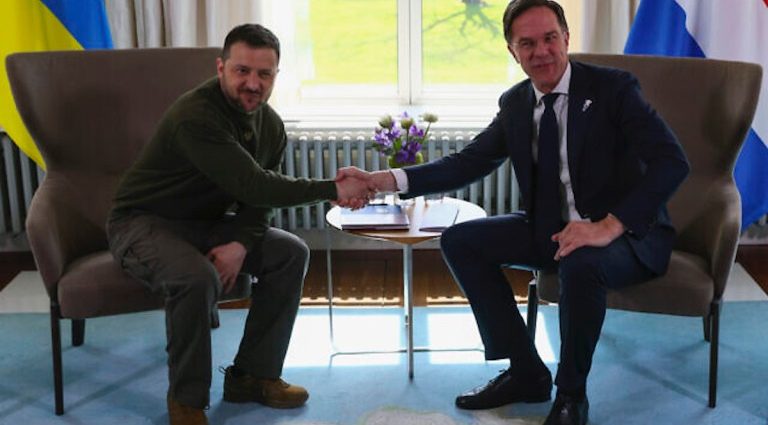Now that President Biden has agreed that NATO members can train Ukrainian pilots on the F-16, it is likely Ukraine will get old F-16A/B aircraft. Although they’ve been upgraded to a degree, these planes date to the 1970s or 1980s. They are not game-changers. Maybe they will boost morale, but once they arrive (in three to six months or more), they won’t change the war in Ukraine.
Ukraine‘s F-16s will likely come from Norwegian, Danish or Dutch inventories, most likely the latter. The Netherlands has reported ongoing negotiations between itself and Ukraine on donation of the jets.
These are old versions of the F-16 (F-16A/B) that were partly upgraded in the early 2000s. Unlike the newer version, and unlike even the upgrade of Taiwan’s F-16s, the F-16s for Ukraine will not feature advanced AESA radar.
The jets will be able to carry air-to-air and air-to-ground weapons, including the AIM 120 medium-range radar-guided air-to-air missile. The planes are better than the Ukrainian Mig-29s they are meant to replace, and far easier to operate. But for Ukraine to field these jets, repair facilities will be needed.

Standing up a repair facility in Ukraine could take more than a year, and training personnel could take even longer. Keeping these planes in the air involves the capability to repair sophisticated components, such as the radar, or to pull and replace failed parts. The software for the aircraft radar, computers and other systems will need to be maintained and, where necessary, upgraded as threats evolve.
Only the quickest and easiest replacements of components are likely to be attempted inside Ukraine. Otherwise, servicing will have to be done in Europe, probably in the country of origin.
Along with electronic components, these F-16s have a General Electric F-110 powerplant that will have to be serviced abroad.
The F-16 requires pristine long runways, which may not always be available in Ukraine. The jets may have to operate with half loads to get off of shorter runways and the rough existing runways may damage either airframes or onboard equipment.
One component of the mid-life upgrade was repairing cracks in the plane’s fuselage, especially critical bulkheads. These repairs seemed good enough to bring the jets to the end-of-life timeline, which the Dutch air force put at around 2023. But the calculation for the repair is mainly based on having very good runways and constant inspection and maintenance. End-of-life aircraft are not the best platforms for critical and sustained combat operations, especially at a high tempo.
The greatest improvement for Ukraine is having a good platform to launch the AIM-120 air-to-air missile. AIM-120 is a beyond visual range missile that blends updates from the launching aircraft with autonomous operation. In practice, this means that enemy aircraft and ground installations could potentially jam the AIM-120 radar or its linked communications. One feature of the Ukraine war is the powerful and effective electronic warfare systems fielded by Russia. This is the first time a European power has actually operated in such a dense EW environment.

A more serious problem for all Ukrainian aircraft is posed by Russia’s layered air defense systems. These may limit the ability for the F-16 to get close enough to certain sensitive Russian installations – especially Crimea, where the S-400 air defense system is set up.
Taking everything into account, Ukraine badly needs the F-16 as its air force is depleted and its existing fighter jet inventory, if still flying, is using degraded equipment that has been battered by the demands of the conflict. There are only a few inventories of used, capable aircraft. Ukraine probably won’t get any more Mig-29s or Su-27s because none are available for purchase or transfer.
Along with the F-16s potentially available from Norway, Denmark and the Netherlands, the other candidate is the Panavia Tornado. Germany has some, as do Italy and the UK. The Ukrainians have not asked for them, and, in truth, they are no longer any match for most of the top-of-the-line Russian aircraft.

Used F-16s at the end of their life, are not really going to change the war chessboard. The arrival of these jets, nonetheless, ought to be a morale booster for Ukraine.
Stephen Bryen is a senior fellow at the Center for Security Policy and the Yorktown Institute. This article was originally published on his Substack, Weapons and Strategy. Asia Times is republishing it with permission.

